 Brandy Phillips
.
April 09, 2020
.
Department
Brandy Phillips
.
April 09, 2020
.
Department
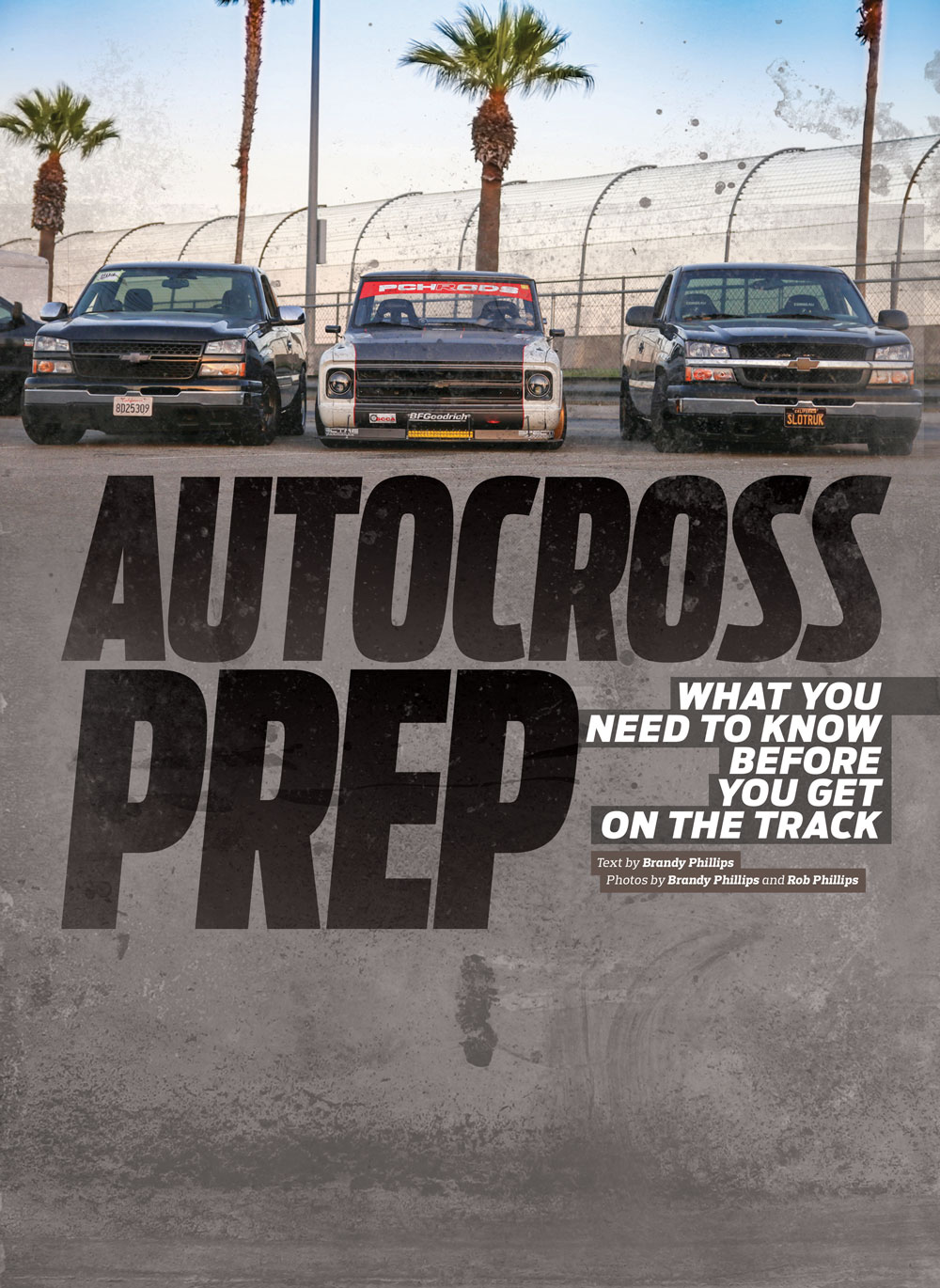
You don’t need a race truck to have fun at an autocross event. It’s common for most first-timers to make very few or no changes to their truck before their first time out. Once you try it, though, you’re almost assured to become addicted. And once that happens, you’ll definitely want to go faster. It’s also pretty likely that you’ll have already started a lengthy list of changes you want to make to your truck, but where should you start? We’ve developed a brief overview of the first few changes you should make to get your truck track ready for an autocross or road course event.
We could fill a book with the ideal setup for each truck application and type of racing, so we’ve streamlined a few changes and setups you can implement right away for the autocross or road course. Since autocross has really boomed in popularity, let’s take a look at why it might be the best style of racing for you.
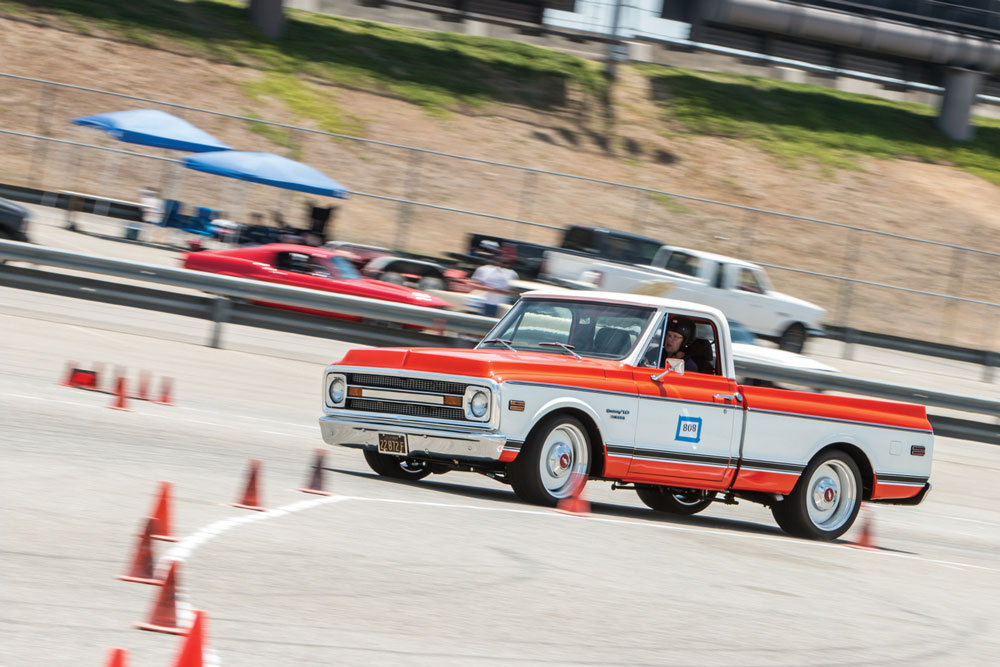
Autocross is an organized competition that tests your control of your car or truck as you navigate through a closed racecourse marked by bright orange cones. These events are typically held in parking lots where there is little to no risk of damage to vehicles. Autocross is not a head-to-head style of racing. Instead, individual drivers take to the course and are timed to the thousandth of a second. Vehicles compete one at a time in designated classes against similar vehicles. Though there are only a handful of organizations that recognize trucks as an individual class, the number of truck participants is growing each year and has lead other race organizations to consider whether or not they should offer a designated truck class.
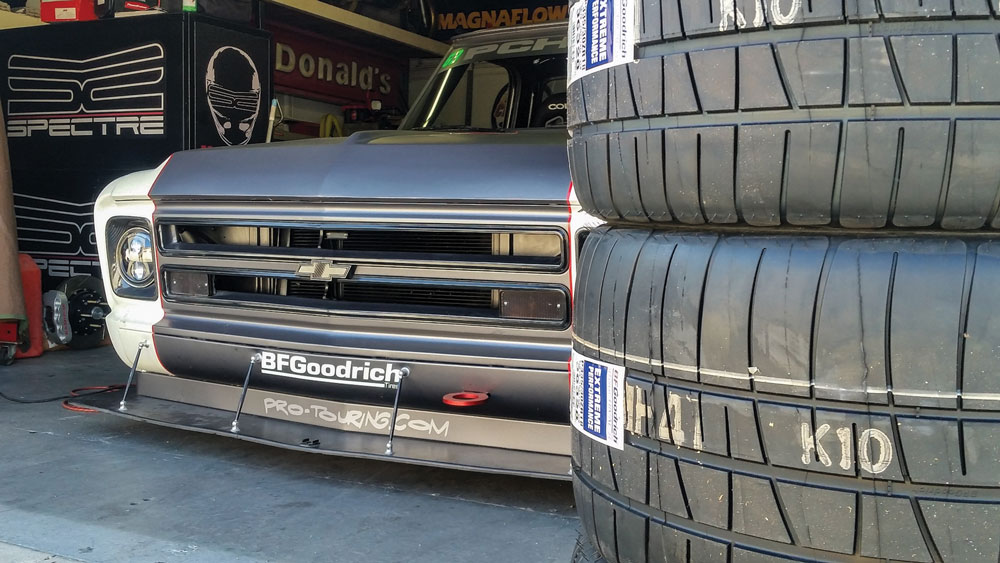
Several mainstream autocross and track events have treadwear regulations that state your tire must be a minimum of 200 treadwear in order to officially compete in the series. If this requirement isn’t met, you might receive an exhibition-only classification, resulting in no points or ranking. There are, however, some organizations that do allow treadwear lower than 200, though running these types of tires may still alter which class you are allowed to compete in.
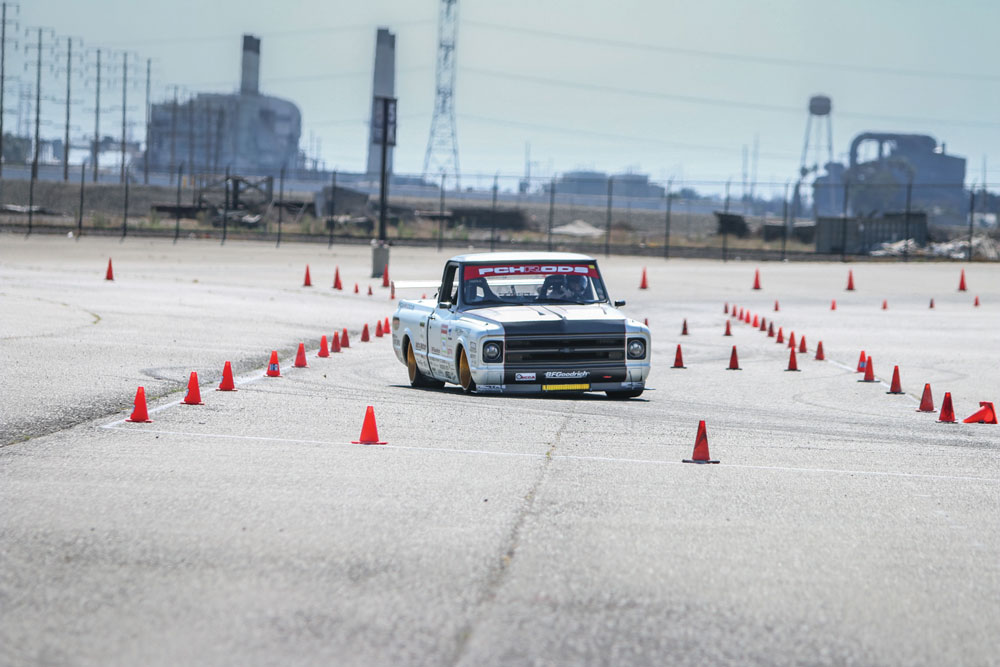
Finding the right tires is probably one of the most important initial changes that can be made to your truck. Common brands like BFGoodrich, Falken, Michelin, Dunlop and Bridgestone are all names you might see seasoned drivers using at autocross and track events. Sizing is also important when considering tire upgrades. It isn’t uncommon to see 335/30/18s all around on some older trucks, while a few late-model trucks might be restricted to 285/35/18s in front and 305/30/18s in the rear.
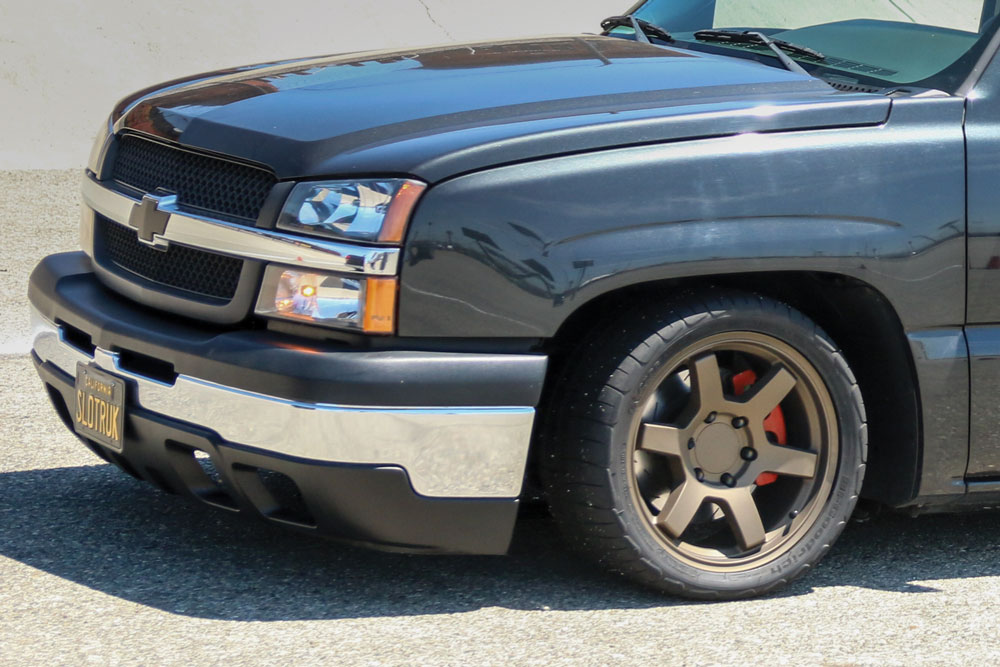
A wheel change is often in order, which will allow a wider variety of available tire sizes. Maintaining the perfect balance between the front and rear tire setup is crucial in racing. Keeping the tire sizes “square” (i.e. same size front and rear), balances the truck. The right tire combination affects even the most seasoned driver, so it’s important to do your research and talk to your fellow racers.
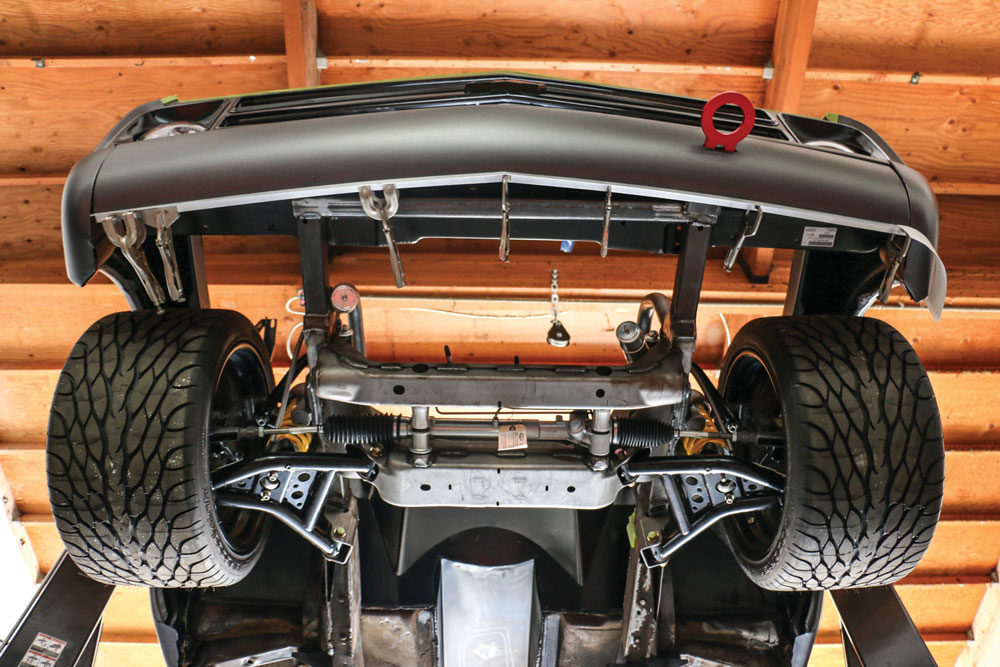
When considering which options are best for you, remember that your truck’s handling can easily be affected by tire size. A tire that’s too small in front and one that’s too big in the rear can cause pushing, which can dramatically affect how your truck handles on the course, especially around an autocross. For example, the initial setup of the PCHRODS ’69 C10R was 275/30/19s in front and 345/30/19s in the rear. The truck handled great in the straightaways, but the second we hit the brakes to turn the front tires they couldn’t keep up with the amount of weight transferred to the front of the truck. While the front tries struggled to maintain traction, the oversized rear tires created too much traction and struggled to continue in a straight line.
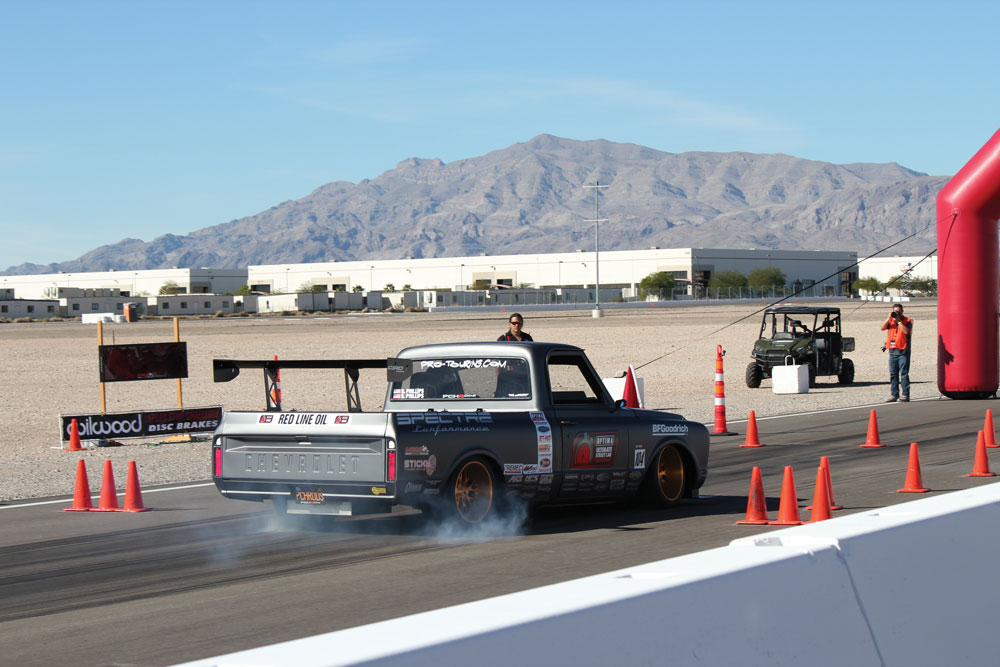
Brakes are obviously an important component of racing regardless of speed. Braking too early causes loss of speed and wasted time, while braking too late forces a truck to push in the middle of a turn. One thing is certain; braking is a huge part of racing.
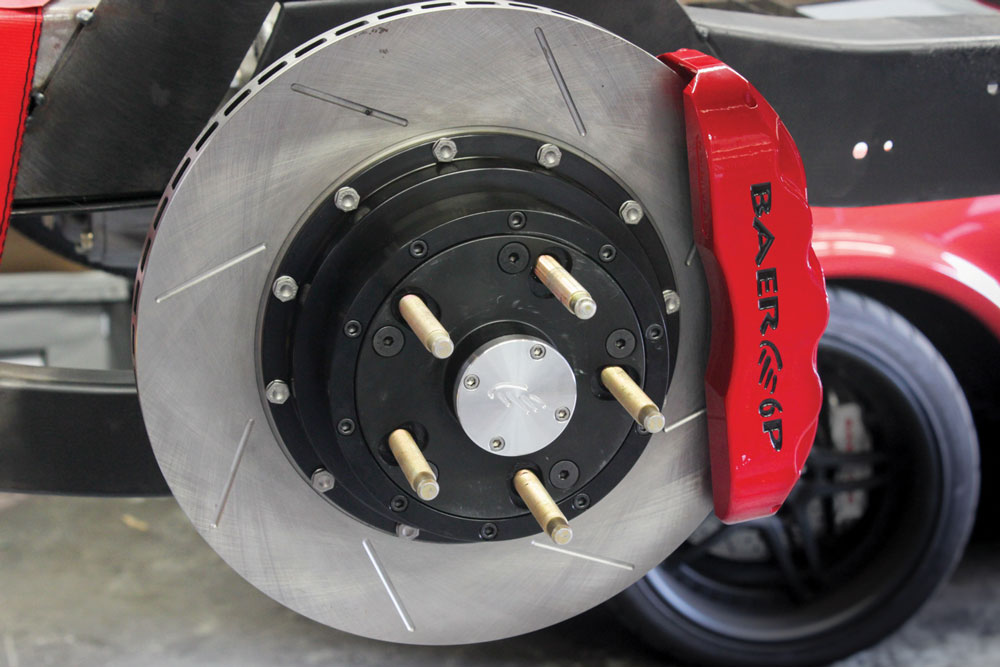
Brake fade can occur under excessive braking at higher speeds and is often seen at track days. To avoid brake fade, upgrading brake pads, rotors or even the complete brake system is strongly recommended. Options such as six-piston brake kits are available from several companies, including Baer Brakes and Wilwood. For some, this upgrade may seem a little excessive, but the six-piston brakes include a larger pad with increased clamping force, allowing you to stop harder and faster.
In autocross, brake pad knock-back can be a real setback, especially in tight course setups. Axle deflection can occur as lateral forces rise with cornering speeds. When the axle flange and brake rotor deflect, the rotor will knock the pad back (knock-back), displacing the fluid in the caliper pistons. In order to reestablish a firm brake pedal, the driver must pump the pedal to move the fluid back into the caliper. Try pumping the brake while going 40 mph into a series of turns; it’s the last thing you want to contend with when you’re trying to lay down a fast lap time.
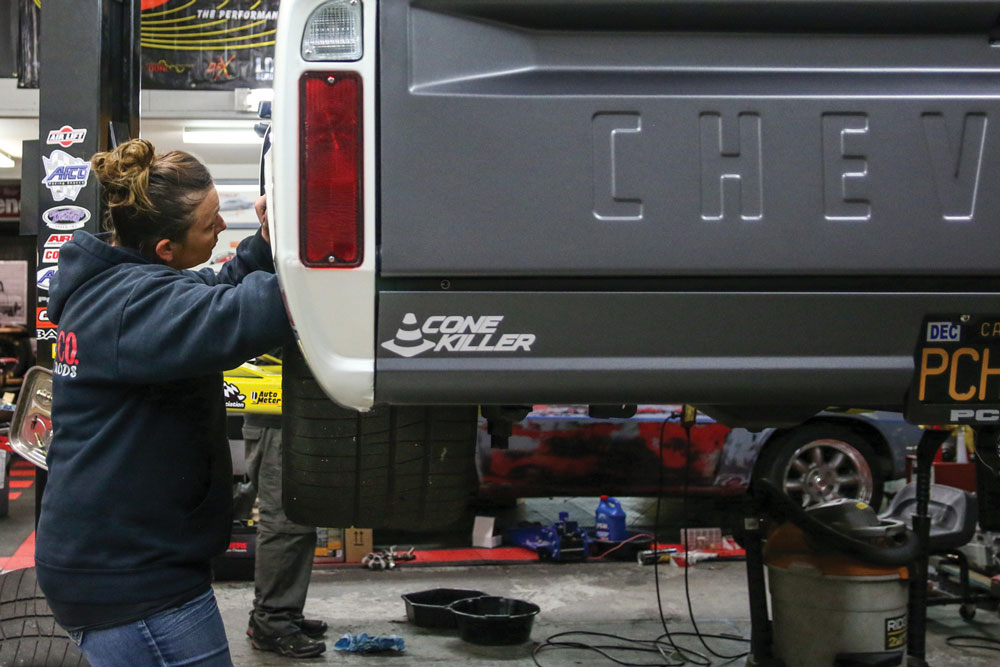
Suspension can make or break a vehicle on track. From “oversteer” and “understeer” to “camber,” “caster” and “toe,” these are all common terms used at autocross and track events.
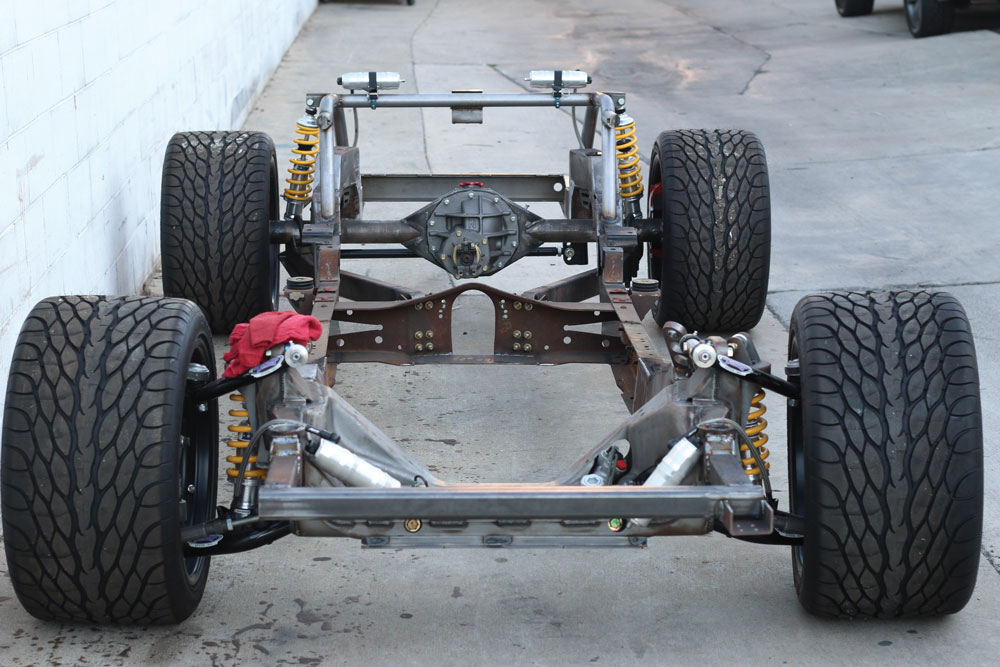
Unless you’re building a truck from the ground up specifically for racing, slow, progressive upgrades to your suspension are highly recommended. Running a stock truck on an autocross and then upgrading your suspension one piece at a time can result in several positive outcomes. First, improvements will be noticeable. Second, the initial cost of suspension modifications isn’t overwhelming. And finally, you can determine more easily what worked and what didn’t when you make fewer small changes rather than several changes all at once.
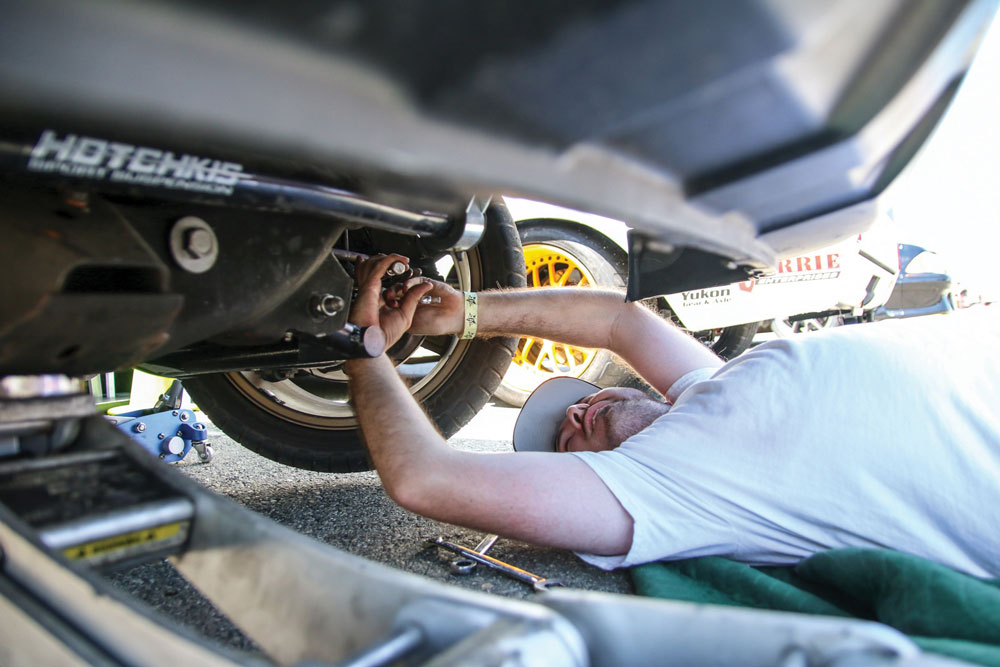
When upgrading your suspension, address the sway bars first. Front and rear sway bars can make a huge difference on track. Without a sway bar, trucks especially have a tendency to roll over through corners due to their high center of gravity. This wastes time during a run and makes your truck unpredictable through turns. Adding a front and rear sway bar, like the setup Hotchkis Suspension offers for
C-10s, allows you to stiffen your truck, keeping it level and helping it roll through the corners better. Rather than fighting your truck through a turn, it becomes more predictable, allowing you to get back on the gas and accelerate through a turn quicker, which also means a faster lap time.
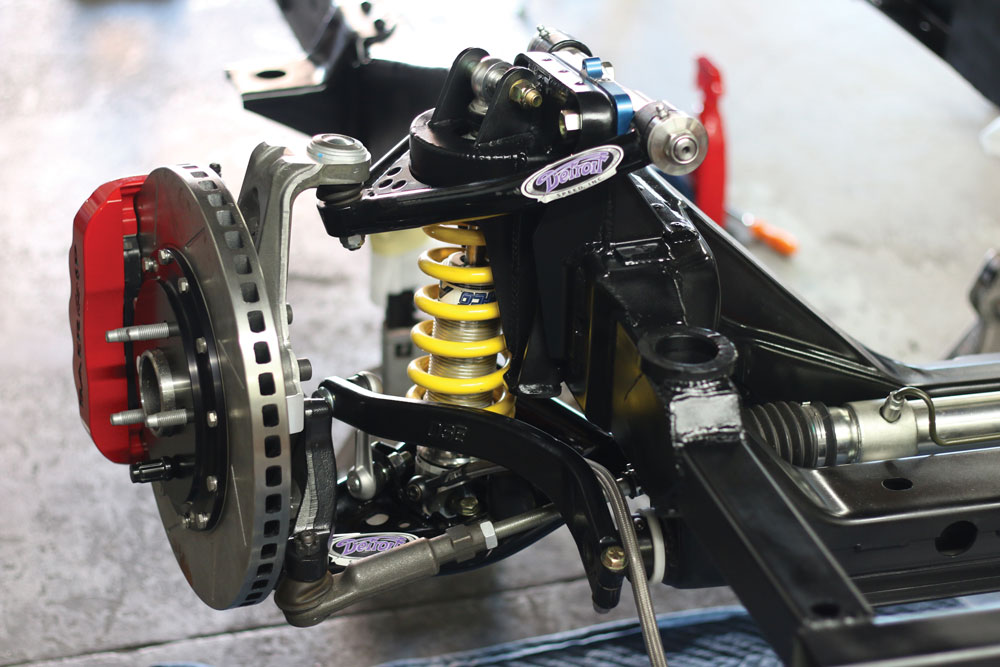
Other suspension upgrades include replacing springs, adjustable shocks, control arms and spindles, full front suspension replacements like the Detroit Speed 595X, or if you want to start from scratch, a full and complete chassis like those from Art Morrision, No Limit Engineering, Scott’s Hotrods & Customs or Roadster Shop.
Suspension upgrades aren’t always necessary, but they sure can help you become faster over time. Autocrossing or racing a truck on a track can be frustrating and discouraging. You’re taking a brick and expecting it to do things it was never intended to do. The continued increase in aftermarket performance products available for trucks has helped revolutionize truck handling for autocross and track setups.
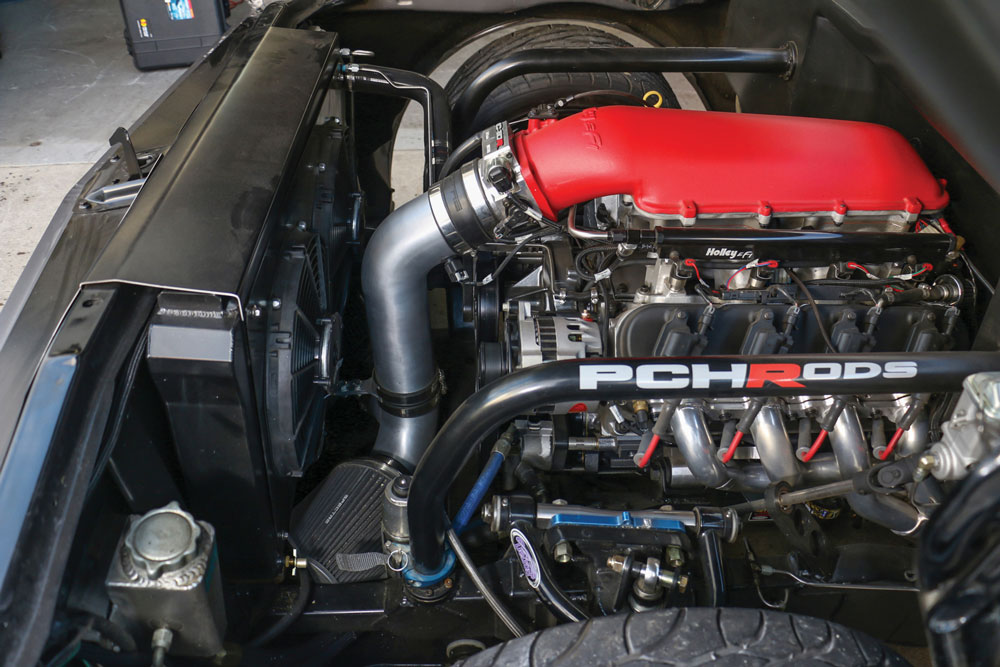
Motor swaps are common, but easier upgrades like replacing the air intake, cam, headers and exhaust can all increase horsepower. When building the C10R, the motor was fully customized, though it wasn’t anything elaborate. We started with a 5.3L
LS truck block. Keeping price and durability in mind, we opted for a cast motor, though it did add extra weight.
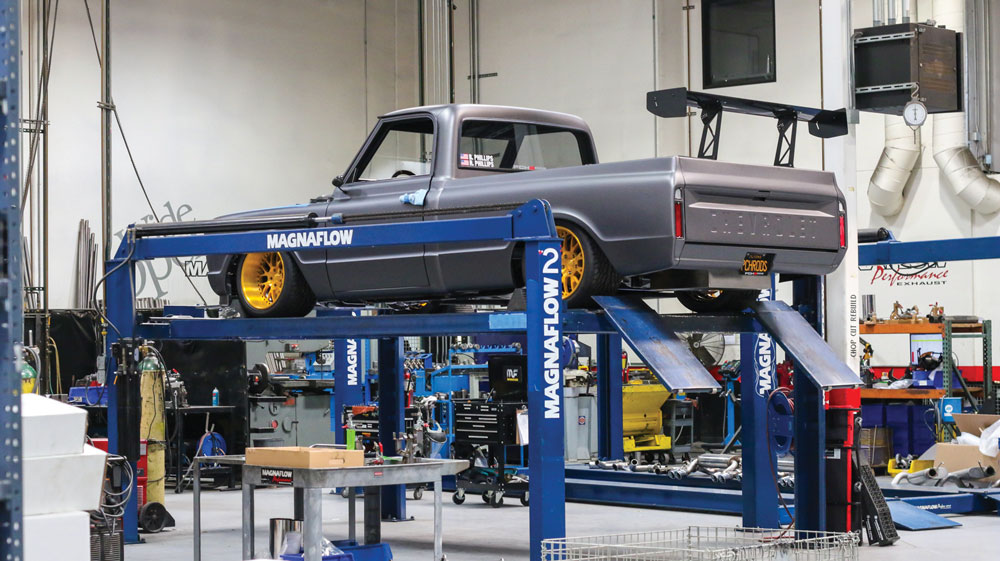
We made sure the motor had enough fresh air by adding a custom Spectre Performance air intake, upgrading the exhaust with a complete Magnaflow setup and by using a set of Hooker headers to give the C10R a little extra horsepower.
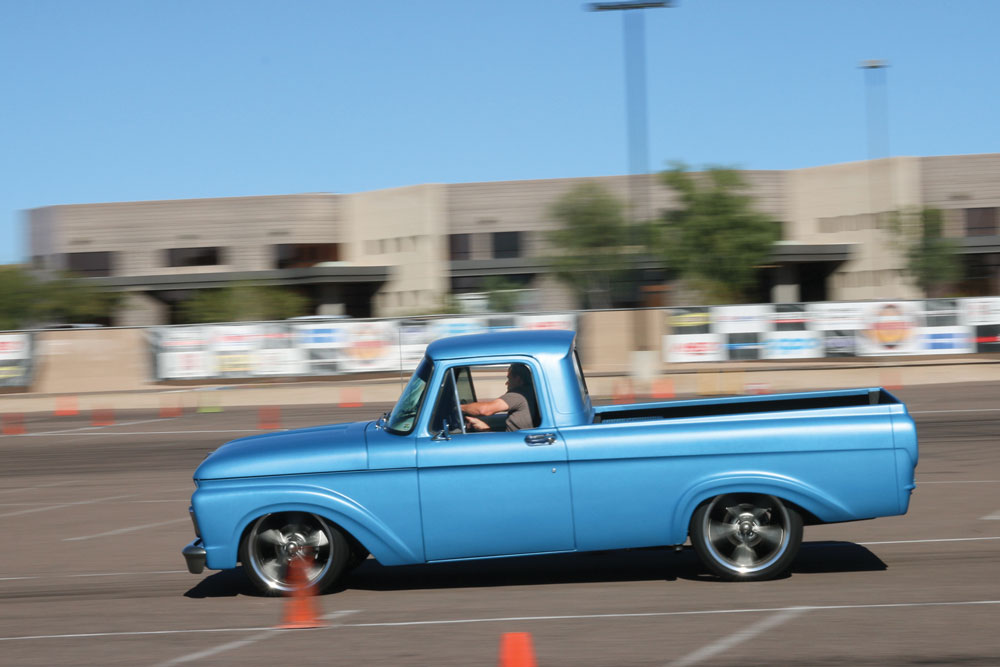
Autocross is one of the safest, least expensive and most empowering styles of racing available. Anyone can evolve with the sport without spending a lot of money or damaging their truck. It’s common to see someone bring a completely stock truck to an autocross for a trial run before they decide to commit to the hobby and make major upgrades. Your driving style can dictate which changes you decide to make to your truck too. The nice thing about autocross is that there are several aftermarket performance parts available, which means you have options.
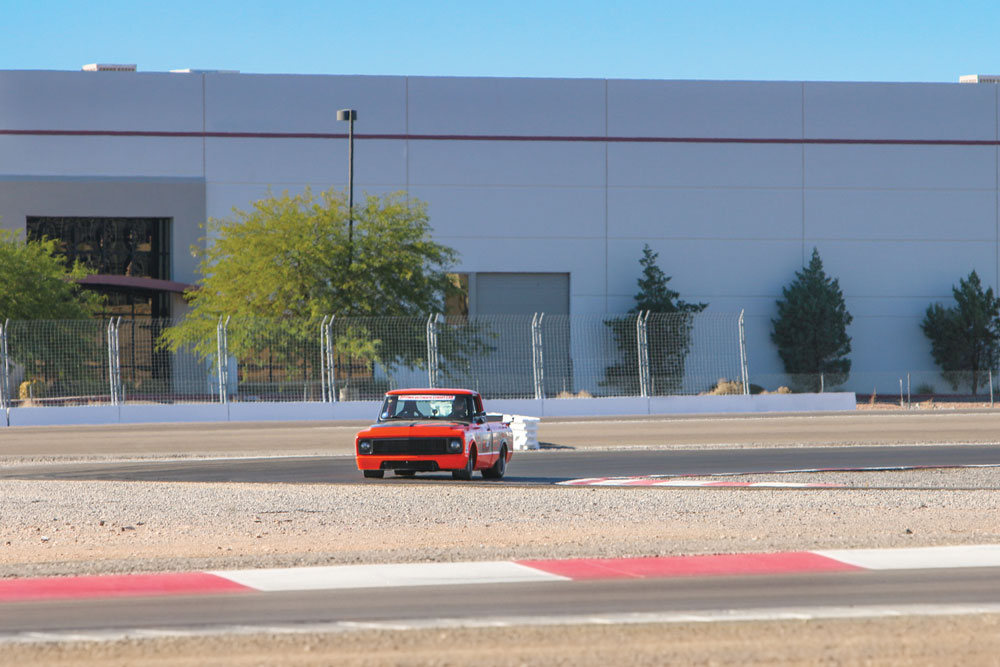
For a track setup, similar modifications can be made, though you’ll eventually need to make adjustments between your autocross and track setups. These changes can be minimal if done correctly. Events like the Optima Search for the Ultimate Streetcar Series does not allow much time between autocross and track changes, so finding a workable setup for both segments is ideal. Racing on a track can lead to more wear-and-tear, but for those looking for a little more speed might prefer it.
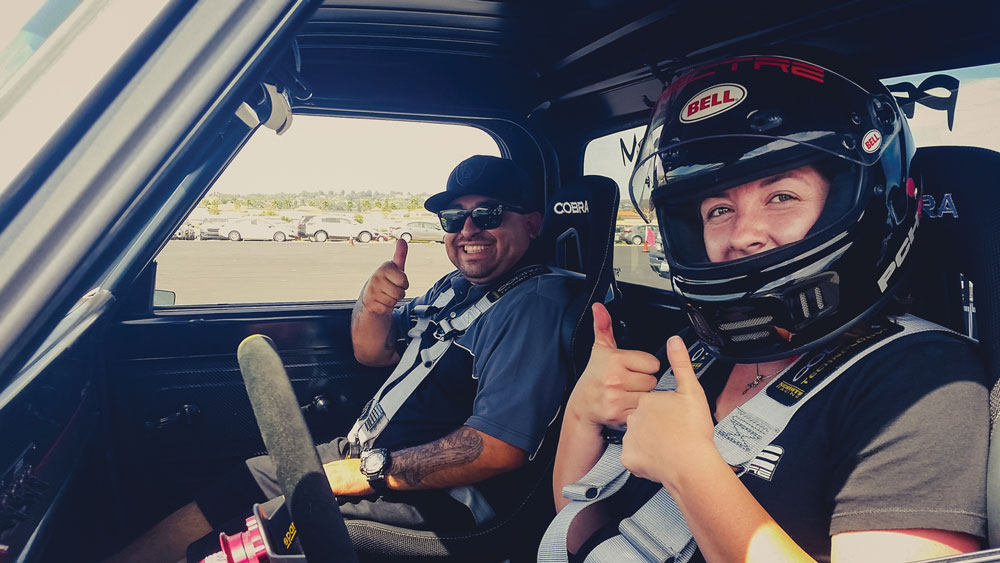
What’s the next step for you and your truck? If you’re interested in more information about autocross and track events, find out which events are happening in your area and attend as a spectator. Talk to people in the pits and ask questions. The pits are filled with intelligent and experienced drivers willing to offer advice and suggestions. Who knows, some of these strangers might turn into friends. We look forward to seeing you and your truck at the next event.
Share Link